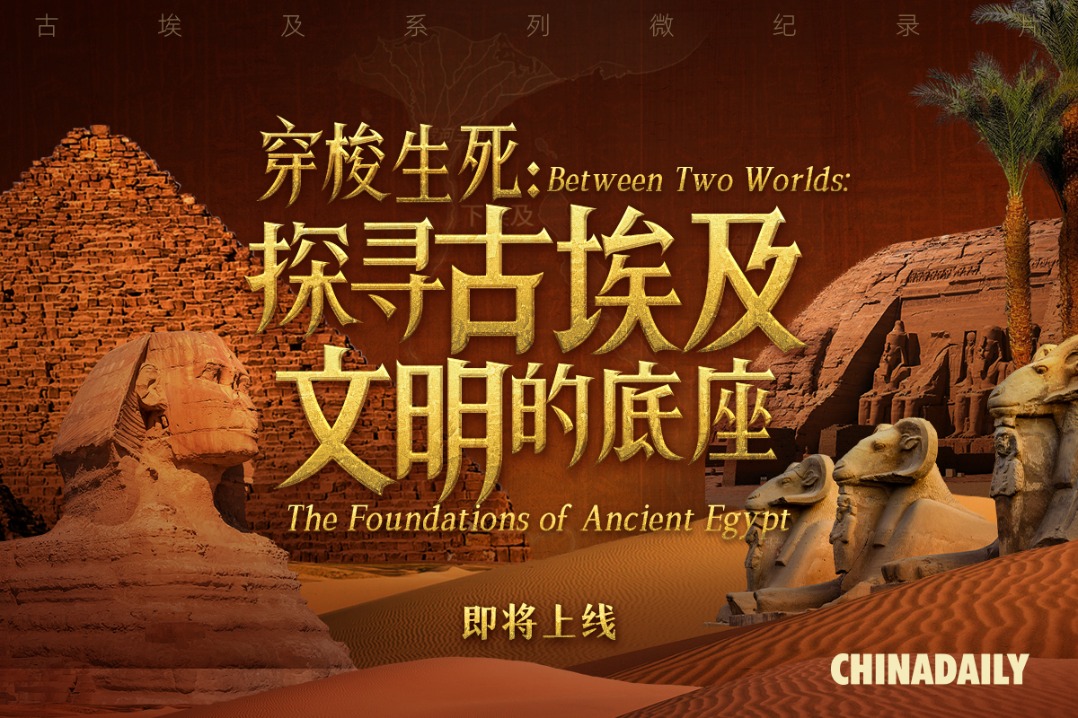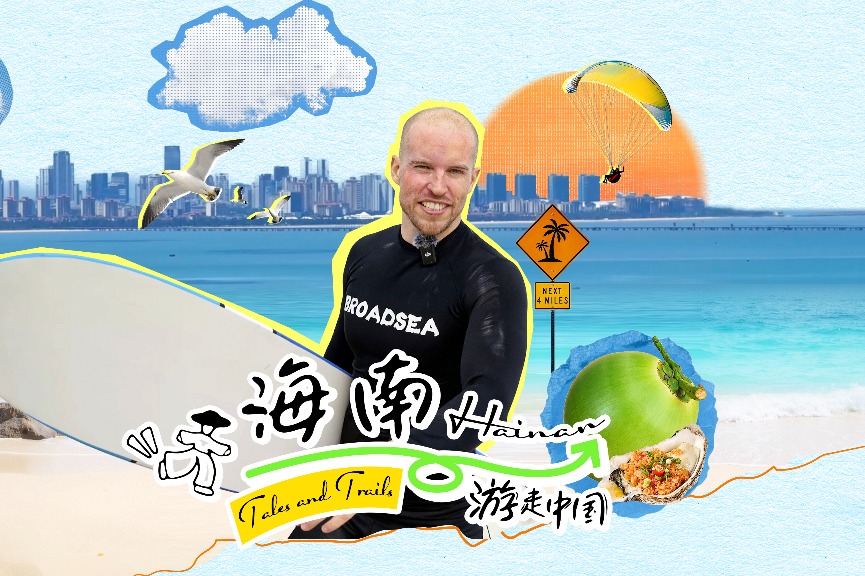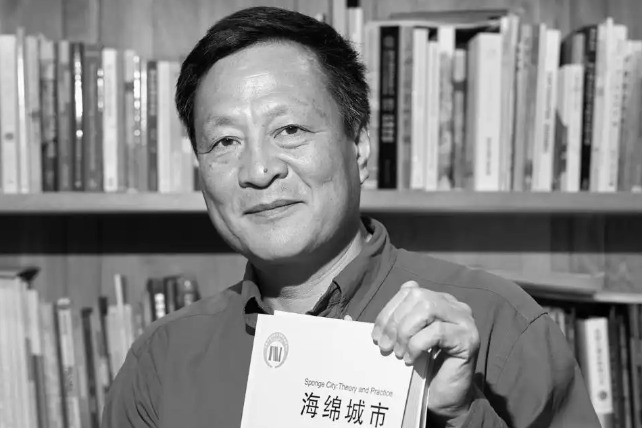STOLEN IDENTITY
Tens of thousands of Indigenous Americans were sent to boarding schools in an assimilation program one bureaucrat saw as part of 'a final solution of our Indian Problem', Zhao Xu in New York reports.

Samuel Torres of the National Native American Boarding School Healing Coalition was at a cemetery in Carlisle, Pennsylvania, in June, with a somber task: to return to Alaska the remains of Sophia Tetoff, 17, who had died in 1906.
She had died of tuberculosis at the Carlisle Indian Industrial School, the country's first government-run off-reservation boarding school for Native American children. Five years earlier she had been forcibly taken there at the end of a 25-day, 6,500-kilometer journey from her homeland by the Bering Sea.
As layers of earth were taken away and the top of the coffin was exposed, Torres, the coalition's director of research and programs, burned medicinal herbs, the sound of a traditional chant rising with the ascending smoke.
In the months before and after the repatriation of Sophia Tetoff's remains, the remains of more than 1,000 people, mostly children, were discovered on the grounds of three former boarding schools for indigenous children in Canada. What is little known is that in 1879, the year Carlisle opened, Canadian government representatives visited it and other boarding schools and returned to Canada lauding what was seen as a "humanistic and philanthropic way to solve the Indian Problem", to quote Torres, himself of Native descent.
"If we can't name the trauma, if we don't know the extent and scope of that trauma, we'll never heal from it," he said, referring to the history of the Native American boarding schools, operated for nearly a century until the 1970s under a US policy of assimilating indigenous people.
"To kill the Indian and save the man" was the mandate given to the Carlisle school by its founder, US army general Richard Henry Pratt. This was, Torres says, after centuries of genocidal war, in which Pratt had probably taken part, had failed to annihilate the race.
"Prior to this education-for-assimilation period, the federal policy toward Native Americans was extermination," Torres says. "There were wars, but there were also many massacres where the US army would go into native communities, wait for the hunting parties to leave and then kill the elderly, women and children remaining in the villages."
In 1819 the US Congress passed the Civilization Fund Act encouraging "activities of benevolent societies in providing education for Native Americans … to stimulate the civilization process". Mission schools flourished, but it would take another 60 years before the government officially took matters into its own hands, when the Carlisle school opened.
Having previously overseen the "civilizing" of a group of Native American prisoners of war in Fort Maison, Florida, Pratt shared the view of the commissioner of Indian affairs, Hiram Price, who said in 1885, "It is cheaper to give them (the American Indians) education than to fight them."
To wean indigenous children of their "Indianness", Pratt said, they must be removed from their tribal context. Thus the opening of boarding schools, many thousands of kilometers from students' homes on Indian reservations. (One bitter irony is that these reservations were formed on the basis of treaties that gave the US federal government huge expanses of land against a promise that it would provide, among other things, education to indigenous children.)
That, Torres believes, is genocide, if one considers the United Nations definition, which includes "forcibly transferring children of the group to another group".
In 1891, 12 years after Carlisle opened, the federal government made attending boarding school compulsory for all indigenous children. Those at these schools could be as old as 17 or 18-in some cases young married women with children were forcibly enrolled-or as young as 4 or 5 since they were considered the most malleable.
Although the number of federally run assimilation-era Native American boarding schools is put at 26, the government also ran many on-reservation boarding schools and provided funding to private boarding schools run by religious denominations. The Native American Boarding School Healing Coalition, based in Minneapolis, Minnesota, has identified about 370 of them.
Between the 1880s and 1930s, through its non-Indian agents, the US Bureau of Indian Affairs trawled the reservations for students to fill the schools. The bureau, which was also responsible for distributing food, land and executing other provisions in treaties with Native American tribes, routinely withheld provisions from those who refused to send their children to the schools. In some cases its agents-who had a quota to fill-simply kidnapped children. It has been estimated that by 1926 nearly 83 percent of Native American school-age children were in the system.
Before the Carlisle school closed in 1918, more than 10,000 Native American children from 140 tribes had been through it. Many, including Sophia Tetoff, never got out alive. Native Alaskan children became targets for the country's assimilation campaign after the US bought the territory from Russia in 1867.
Deb Haaland, the US Secretary of the Interior and the country's first Native American cabinet secretary, said the discoveries of unmarked graves in Canada had left her "sick to my stomach". Haaland, whose great-grandfather was a survivor of the Carlisle school, launched the Indian Boarding School Initiative in late June.
The stated goal of the initiative is to identify boarding schools, their students and any possible cemetery or burial ground connected with them, what Torres calls "the tangible side of things".
It is the intangible that has proved to be the most "deleterious", with cycles of nefarious influences "rippling out" across generations, says Eric Anderson, professor of American Indian studies at Haskell Indian Nations University in Lawrence, Kansas. Anderson, whose mother was Native American, has taught at the university for 13 years. It opened in 1884 as an off-reservation Native American boarding school, before becoming, in the post-assimilation years, a high school, a community college and ultimately a university exclusively for Native American students.
"All my students are connected, at least tangentially, to the boarding school experience through their ancestors, and very few of them speak their own indigenous languages," Anderson says. "In some cases they came from tribes where there are virtually none, none at all, of fluent speakers. The boarding schools had essentially beaten the language out of multiple generations."
He was referring to the punishment students were often subjected to for talking in their native tongue, even among themselves. This included having their mouth washed out with soap, being held in dark solitary confinement for days, or forced to run a gauntlet whereby the victim went down in between two lines of fellow students, who swung their belts at the victim, egged on by the teacher. All present were in no doubt of their fate if they broke the same rule.
As their language died, so did their songs, music and rituals, "things that contain not just an epistemological outlook but also stories, histories, moral codes and values", Anderson says.
In fact on the very first day at the school they were stripped of all "outward Indianness". Their long hair, a source of pride for all American Indians, was viewed as a sign of savagery and instantly sheared-boys' mowed to military style and girls' reduced to short bob.
Their embroidered and fringed leather outfits and moccasin boots, sewn by mothers and grandmothers, were removed and replaced in many cases by military-type uniforms. In fact many boarding schools, including Carlisle, were built on old army barracks, some used in wars against the Indians. In some cases shoes provided were so small that the wearers were left with deformed feet.
The children, who at this point could barely speak a word of English, were given English names, before being baptized and told that "God was a starving white man, with long hair and blue eyes and a beard", says John Smelcer, an American author who writes about the boarding school experiences in both poetry and historical novels.
For Lindsay Montgomery, author of the book Objects of Survivance: A Material History of the American Indian School Experience, two things she has studied speak powerfully about this experience. One is a medicine pouch beaded with the image of a Christian church, made by a boarding school student employing indigenous handicraft; the other is a set of leather dolls students made that wear traditional Indian dresses, which "would have helped children imagine themselves".
"There we can see some space, however tiny it was, where Native kids could express their own traditions in which they took pride," says Montgomery, assistant professor of anthropology at the University of Arizona.
But such space was not always available. During Montgomery's research for the book she came across the story of an Indian girl named Clara who attended Tulalip Boarding School in Washington State. Caught teaching her fellow students how to weave traditional Indian baskets, she was hit repeatedly on the knuckles with a metal-edged wooden ruler until her fingers started to bleed.
Both the medicine pouch and the dolls came from the collection of one man, Jesse H. Bratley who, around the turn of the 20th century, worked in Native American schools across five reservations in the American West. He believed that by bringing indigenous children into English-speaking Western society he was doing them good, even as he became enamored of their culture, collecting ceramics, dresses and shields now held by the Denver Museum of Nature & Science. This was typical of Bratley's era, Montgomery says.
"In his autobiography, Bratley talked about how Native culture was fast disappearing and how he needed to go out and document it, which he did through his collections and photographs. But there's a disassociation between the living culture and the exotic one he sought to preserve and which he preferred to view in a museum."
Montgomery pointed to the "fantasizing" of American Indian culture that continues in the US to this day, fueled by popular media and institutional racism.
In 1904 Bratley attended the World Fair in St. Louis, Missouri, where a replica boarding school was an exhibit. But there was no sign of the pervasive physical, mental and sexual abuse, overcrowding and poor sanitation that inevitably had any infectious disease running rampant, and ultimately the many deaths, the vast majority of which remain undocumented.
According to the Meriam Report of 1928, which painted a damning picture of life at the boarding schools, students sometimes had no access to soap, and had to share towels, cups and beds. This led to major outbreaks of trachoma, measles and tuberculosis. The influenza pandemic of 1918-19 also hit the boarding schools hard.
In most cases school officials failed to notify parents of the sickness until their children died, often in agonizing solitude. Many were buried in school cemeteries, in wooden coffins made by their classmates.
"Indian children … in the residential schools… die at a much higher rate than in their villages," Duncan Campbell Scott, the Canadian government's deputy superintendent of Indian Affairs, said in the 1920s. "But this does not justify a change in the policy of this department, which is geared toward a final solution of our Indian Problem."
Evidence suggests that in this matter Scott's US counterparts were of a similar view.
In a letter to his father, a Sicangu chief, dated March 31, 1881, Luther Standing Bear (1868-1939), who attended the Carlisle school, wrote:
"Day before yesterday, one of the Sioux boys died. His name is Alvan. He was a good boy always. So we were very glad for him. Because he is better now than he was on Earth. I think you maybe don't know what I mean. I mean he has gone in heaven."
In the same letter, the boy urged his father, "I want you must give up Indian way." Similar sentiments were expressed as he wrote the previous year: "Now always let us try to speak English and work and write and be good and be right and let us do right everything that is best way and Capt. Pratt what he says."
Jacki Thompson Rand, a professor of American Indian studies at the University of Illinois Urbana-Champaign, said in an interview with Vox, an American news website: "If you were a child who had any spirit at all, they made it their business to take it right out of you."
A crushing sense of shame, long pumped into the hearts of students who were reminded daily of the "inferiority" of their race, led not only to mental and physical instability, but also to debilitating and lifelong self-hatred.
The Native American journalist Mary Annette Pember, in an article for The Atlantic titled Death by Civilization, recalls how her late mother, who attended a Native American boarding school run by the Catholic Church, "would spend hours washing the laundry 'white, white' like the sisters had taught her".
"We may be Indian, but by God we ain't dirty," Pember, who watched with "tense stomach muscles", recalled her mother saying as she hung baskets of heavy, wet sheets on the line.
Some students committed suicide while at school, but many more who found it unbearable ran away. Some succeeded, others were captured and brought back, bounties being offered by some schools. Some may have disappeared along the way.
"The Haskell campus used to be much larger than it is today, with the south edge of the campus moving into a wetland area that once upon a time went on for miles," says Anderson of the days when Haskell, with Carlisle, was one of the country's flagship off-reservation boarding schools. "If students were to run away, that's the direction most of them would go.
"Given the fact that Kansas is a place of extremes in weather-the temperature can drop for 40 degrees Fahrenheit (about 20 degrees Celsius)-it would not surprise me if a runaway student who was exposed to the elements and who understandably was traveling light, succumbed to weather while trying to traverse the wetland. This is not to mention getting stuck in the swampy ground. I guess you could call those unmarked graves."
Yet the longing for home was so strong, longing intensified by the fact that many students, once enrolled in the boarding schools, were unable to return to see their parents for years on end. To eliminate anything that would undermine the assimilation process, Pratt invented a system called outing whereby students were required to work during school holidays-usually boys on farms or in factories owned by white men and girls in white households.
Even during a normal school day, students routinely spent half a day in the classroom and the other half engaged in vocational training. Consequently, most students never received more than a primary education for the years spent there. Critics see this tendency to industrialize as an upper-class strategy for social control and order.
One group of indigenous girls who "pushed back against this dominant school ideology"-in the words of Jacqueline Emery, author of the book Recovering Native American Writings in the Boarding School Press-were the female editors of Hallaquah, a student newspaper published by Seneca Indian School in Wyandotte, Oklahoma.
Describing the manual work as a distraction from their other duties in an article for the paper, the young women, without explicitly criticizing the schools, were suggesting "they had a higher capacity for intellectualism", Emery says.
In preparation for her book, Emery, a language professor at the State University of New York at Old Westbury, studied 15 newspapers published by Native American boarding schools during the era of intense assimilation between late 1870s and 1930s.
"There had been a tendency to write these off completely as mouthpieces for the program," she says, pointing to the fact that the papers, sometimes strongly censored by the school authorities, were published to serve, first and foremost, a propagandist agenda. (Carlisle, among others, had set up its own printing houses.)
"Now more and more scholars are taking a second look at these newspapers, to see what's actually there," Emery says. "Can we hear students in these pages? My argument is, yes, you can."
Writing in highly accomplished English for Talks and Thoughts of the Hampton Indian Students, published by a boarding school in Hampton, Virginia, were Anna Bender and Elizabeth Bender.
"Together the sisters transcribed and recounted tribal tales, histories and oral traditions," says Emery, who consulted the New York Public Library for the most complete run of the century-old papers, which, in hand, "felt like they are going to literally crumble".
"Subtle gestures" of pride like this one, she says, were used by students to "shape representations of Indianness" and to facilitate "community building", helped by the fact that the newspapers were available in other boarding schools and sometimes even in the reservations-efforts by the authority to keep all students, including potential ones, "in the loop".
Perhaps more significantly, such experiences cultivate activism in the authors themselves. "Some of the 'exemplary' students later became civil rights leaders," Emery says. "They came to see the English language as a powerful tool to speak in the interests of their community."
The Bender sisters were once selected as model students to travel on behalf of their boarding school, the Hampton Institute in Virginia, to attend events such as the 1904 World Fair, before both becoming involved in indigenous rights issues.
Another example is Luther Standing Bear, who implored his Indian chief father to adopt Christianity, in a letter that is part of Emery's book. He grew up to be an author, educator, actor and Indian chief, fighting for the government to change its policy toward indigenous people.
To Emery, the cultural loss at the boarding schools, irreparable as it was, had also brought out cultural awareness and persistence. And the school experiences, embodying both victimization and agency for indigenous people, were all part of their ever-evolving identity.
To prevent students from communicating in their indigenous tongue among themselves, school authorities deliberately mixed children from faraway tribes that did not share the same language, leading inadvertently to intertribal friendships and marriages. Pan-Indianism, a philosophical and political movement promoting unity among all indigenous peoples, was activated and came to the fore in the US in the 1960s and '70s.
By then the 1928 Meriam Report, commissioned by the Department of the Interior, had been out for about 40 years. The report, a comprehensive update on the state of Native American affairs, included scathing criticisms of the boarding schools, exposing their dark side from widespread use of corporal punishment, exploitation of student labor to chronic malnutrition and bad sanitation.
Yet even though the report called for the boarding school system to be abolished and to be replaced by day schools, it persisted, and even flourished, with enrollment reaching its highest point in the 1970s, 60,000 new enrollments being made in 1973 alone.
Extreme poverty, Montgomery believes, was the reason. Often unable to reintegrate with their community due to factors ranging from cultural and linguistic disparity to the lack of a basic knowledge of tribal work, the graduates were also "systemically excluded from the white-controlled job market", she says.
"They were not only traumatized but also couldn't make a living. So the next generation grew up in utter poverty."
In 1975 the US Congress passed the Indian Self-Determination and Education Assistance Act, which granted tribes the ability to take over responsibility for the programs that had been administered by the federal government. Three years later the Indian Child Welfare Act was passed, giving Native American parents the legal right to refuse their child's placement in a school.
This seemed to be the death knell for most boarding schools, but some remain. There are still 73 schools in the US that can be traced to the old boarding school days in the late 19th and first half of the 20th century, Montgomery says. Fifteen are still boarding schools for indigenous children, albeit operating on a different curriculum that incorporates the students' indigenous culture. The rest, including the Haskell school, formally known as the United States Indian Industrial Training School, have evolved into public schools or colleges.
Before the COVID-19 pandemic Anderson went daily to work at the Haskell University where he would drive past a cemetery with about 100 headstones, all belonging to early boarding school students. On the same campus, their one-time existence is also recalled in the 123-year-old Hiawatha Hall, still standing, built by students "out of native Kansas limestone".
"We still live in a colonial society," Anderson says. "The relationship between the United States government and the American Indian people, while much improved than it was 100 years ago, is still a colonial one. The reservations still exist. The federal policies that affect us still exist. And the history of jurisprudence with relationship to native people still holds precedent in legal cases."
Elsewhere, Montgomery, who has both African and Native American blood and refers to herself as "a unique byproduct of American colonialism", has found few physical remains of the boarding schools except for stone foundations. "While I stood on top of them, I couldn't help but feel how isolating and confining life must have been for the children."
One of Montgomery's favorite stories was told to her by an enrolled member of the Port Gamble S'Klallam tribe named Gene Jones, who attended a day school for indigenous children in the 1950s. Told in class by his non-Native teacher that the S'Klallam people were basically all dead, Gene Jones, 10, raised his hand in objection.
Montgomery says: "The teacher said, 'If you write a report for me that documents the history of your tribe, I'll believe you.' The little boy went out trying to find written records of his community but couldn't find anything. He then went home to his mom, in tears.
"His mom said, 'We never wrote anything down. You have to go talk to your uncles and grandparents.' So the boy did that. And then he wrote his 90-page report and gave it to the teacher, who was absolutely speechless."
Jones' maternal grandmother is Clara, the girl who got bleeding fingers for weaving Indian baskets at her boarding school.
For Emery, one revealing moment came when she encountered the death of Lucy Grey in the last editorial carried by Hallaquah, between 1879 and 1881. Joining her fellow female student editors at the Seneca Indian School in January 1881, she died that autumn from a pneumonia epidemic that swept through the school.
A few years ago Emery also visited the Carlisle School, whose assimilation history, thanks to Pratt's penchant for publicity through photography, had been better preserved in images than any other boarding school.
"There was an active army base," she says. "It was summertime and families playing there in a pool-it was so surreal. There was a signage but nothing else. I feel like you'd have to look for it to know it's there."
More than 180 children are buried in the original Carlisle Indian Cemetery. In 1927, nine years after the school closed, the US Army disinterred the remains of indigenous children without tribal consent to make way for a parking lot.
Since 2017 the US Army War College and the Carlisle Barracks, to which the current burial ground belongs, has been involved in the repatriation of the remains of former students, at the request of their families and tribal members.
Of the 21 who have so far gone through this process, Sophia Tetoff was among the latest.
Despite her grueling continent-crossing journey by both boat and train, very little is known about her five years at the Carlisle school except that she spent more than half of that time working for months at a time in country homes. She was on her fifth such outing when she contracted tuberculosis in 1905 and was sent back to Carlisle, where she died a year later.
Posthumously, she had existed only on a couple of student cards which can now be viewed at the website of Carlisle Indian School Digital Resource Center. That was until a few years ago when Lauren Peters, her great niece who had studied Native American history, learned about her existence through a tribal elder. Peters and her family eventually contacted the Boarding School Healing Coalition, which had helped repatriate other Carlisle students.
Describing the event as "intimate and deeply powerful", Torres was invited by Peters and her son to be "part of the process of removing dirt", "one narrow layer after another, in a reverent procedure overseen by professional archeologists".
That was before a tiny wooden coffin, "with a bit of wear but still intact", to use the words of Torres, revealed itself. He then retreated to give the family "privacy with their ancestor", almost exactly 120 years after she first set foot on Carlisle soil, on June 26, 1901.
"None of those decisions-her arrival at Carlisle and her burial there-were Sophia's own ones, Torres says.
"None of the children whom Sophia had been with, in life or death, got to have their own choices. It's time for home."
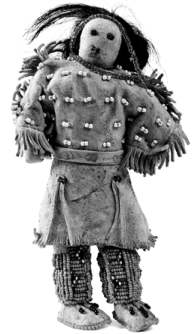
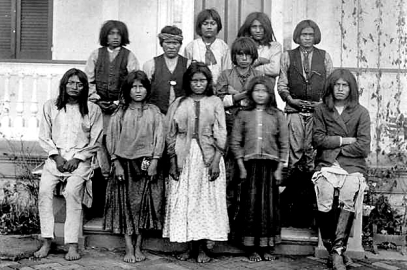
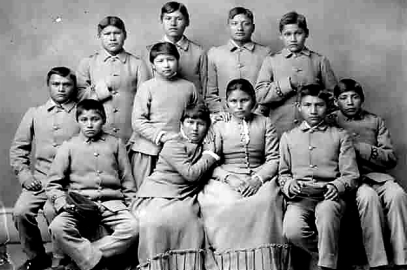
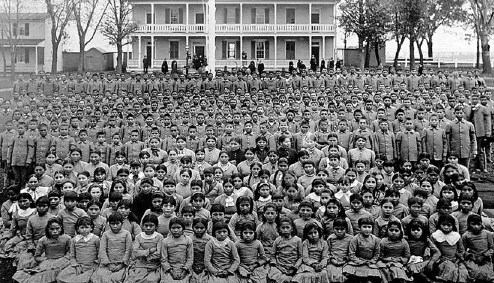
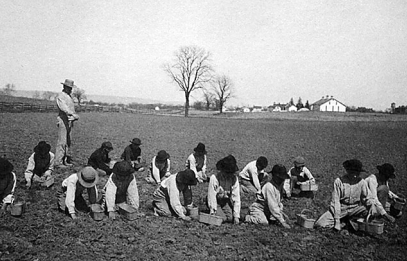
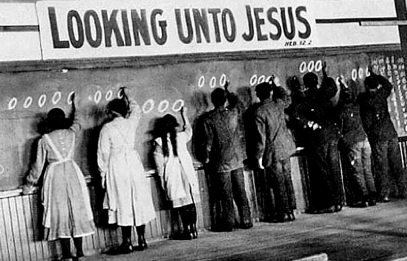
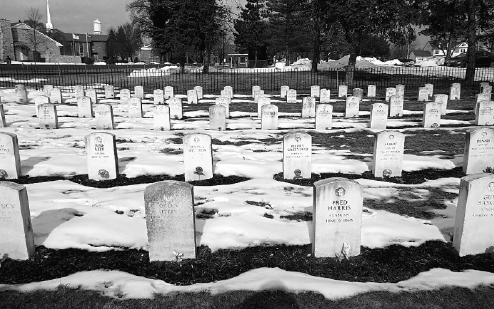
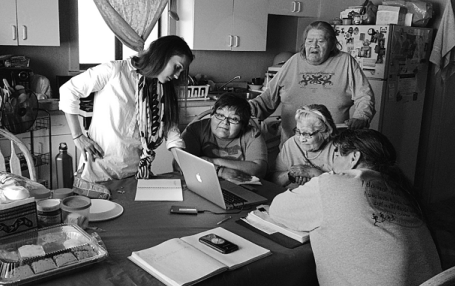

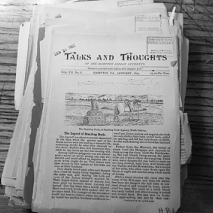
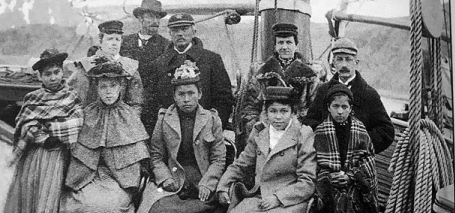
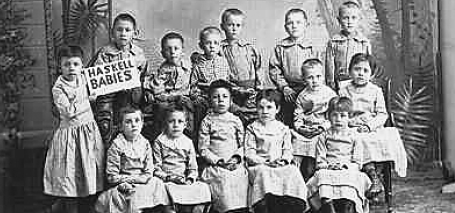

Today's Top News
- New finding may rewrite human family tree
- China urges cooperation to boost global digital trade
- Beijing calls for stronger voice of justice
- China beefs up climate response with new 2035 targets
- Xinjiang marks seven decades of growth, unity
- Xinjiang's farm produce on global map


















